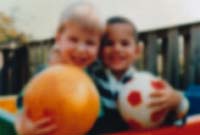Ageing Vision

Ageing Vision
Since your 40s, you probably noticed that your vision is changing. Perhaps you need glasses to see up close or you have more trouble adjusting to glare or distinguishing some colours. These changes are a normal part of ageing. These changes alone cannot stop you from enjoying an active lifestyle or stop you from maintaining your independence. In fact, you can live an active life well into your golden years without ever experiencing severe vision loss. But as you age, you are at higher risk of developing age-related eye diseases and conditions. These include: age-related macular degeneration, cataract, diabetic eye disease, glaucoma, low vision and dry eye.
Get a comprehensive eye exam.
Everyone age 40 or older should visit an eye care professional for a comprehensive eye exam. Many eye diseases have no early warning signs or symptoms, but a comprehensive exam can detect eye diseases in their early stages before vision loss occurs. Early detection and treatment can help you save your sight. Even if you aren’t experiencing any vision problems, visit your optometrist for an eye exam. They will tell you how often you need to have one depending on your specific risk factors.
Common Age-related Eye Diseases and Conditions include:
Age-related Macular Degeneration (AMD)
AMD is a disease associated with aging that gradually destroys sharp, central vision. Central vision is needed for seeing objects clearly and for common daily tasks such as reading and driving.
Cataract
A cataract is a clouding of the lens in the eye. Vision with cataract can appear cloudy or blurry, colours may seem faded and you may notice a lot of glare.
Daibetic Eye Disease
Diabetic eye disease is a complication of diabetes and a leading cause of blindness. The most common form is diabetic retinopathy which occurs when diabetes damages the tiny blood vessels inside the retina.
Glaucoma
Glaucoma is a group of diseases that can damage the eye’s optic nerve and result in vision loss and blindness. It is usually associated with high pressure in the eye and affects side or peripheral vision.
Dry Eye
Dry eye occurs when the eye does not produce tears properly, or when the tears are not of the correct consistency and evaporate too quickly. Dry eye can make it more difficult to perform some activities, such as using a computer or reading for an extended period of time.
Low Vision
Low vision means that even with regular glasses, contact lenses, medicine, or surgery, people find everyday tasks difficult to do. Reading the mail, shopping, cooking, seeing the TV, and writing can seem challenging. But, many people with low vision are taking charge.












